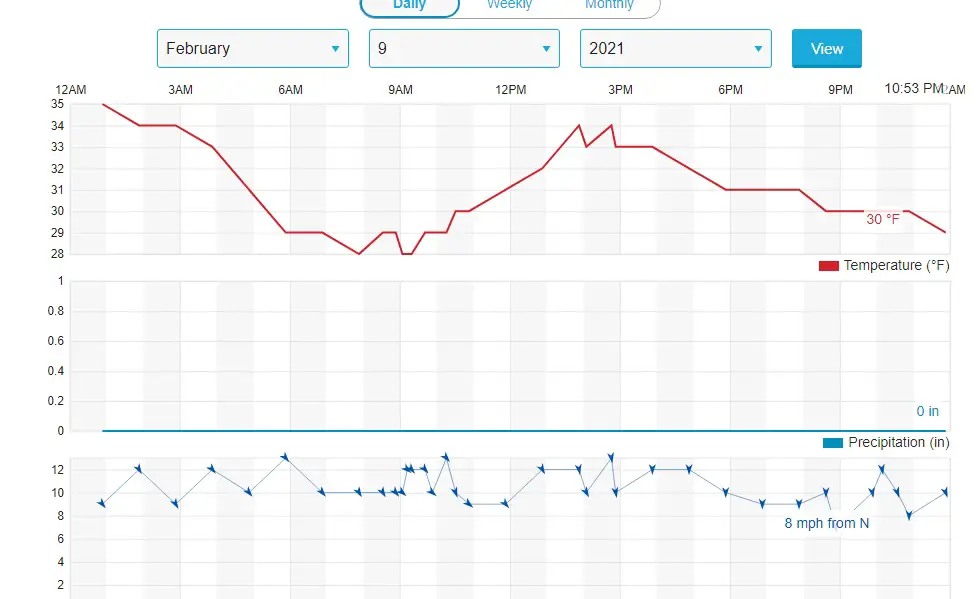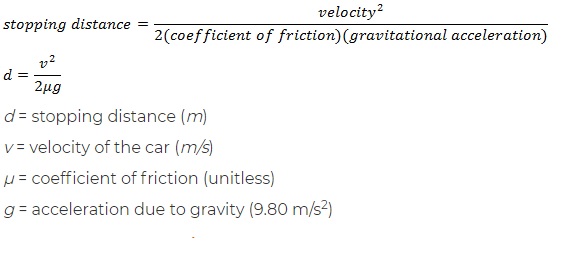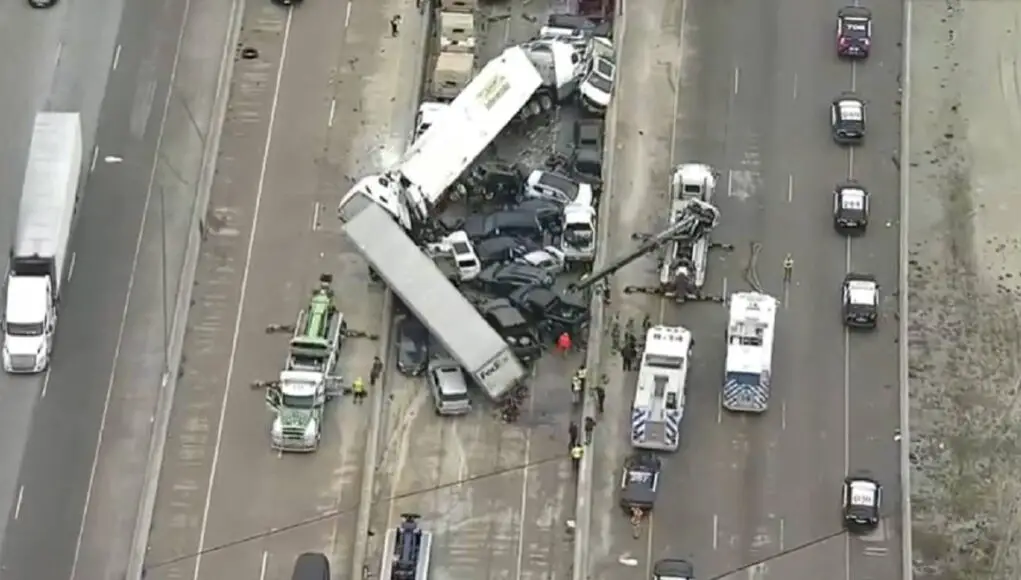Officials estimate over 130 vehicles were involved and confirmed at least six deaths.
Fort Worth residents and much of social media woke up earlier today (Feb 11. 2021) to sobering news that dozens of semis, cars, trucks, and SUVs were involved in a massive pileup, crashing into each other over a half-mile stretch of Interstate 35 West in the heart of Fort Worth Texas.
As eye witness videos, first-hand accounts, and early morning reports from motorists stuck in traffic starting pouring in, the preliminary consensus was these motorists hit patches of black ice. Only later was this theory confirmed when on-site emergency service officials said “ice was a contributing factor in the pileup.”
And according to NBC 5 Meteorologist Grant Johnston,
…a tenth of an inch of ice fell in parts of North Texas during the morning commute, which resulted in ice accumulations on many roads, bridges and overpasses.
that’s A.K.A. sleet.
What is black ice?
Black ice is a thin layer of the frozen stuff that forms on road surfaces during cold weather. It’s called black ice because it’s so thin, you can see the blacktop of the road underneath. Here’s a screenshot of weather during a day before in Fort Worth.

You’ll notice, since temperatures are near freezing (31F,) there are times where the already dropped ice and sleet will melt and then freeze causing that dangerous thin layer of black ice to form.
The stopping distance of a car relies on two factors, your speed and the amount of friction between your tires and the road (called the coefficient of friction.) Dry roads have a higher coefficient of friction resulting in improved car maneuvering, acceleration, and better braking. Icy roads, like black ice, have as little as a fifth of the coefficient of friction.
In physics, the stopping distance formula is

All you need to understand is even if your car has the most powerful brakes, icy roads increase stopping distances by several factors. For speeding and unattentive drivers, this is a recipe for collisions.
Checking your tires first or giving yourself the best chance if you encounter a black ice situation.
While most articles will tell you how to spot and avoid black ice, few, if any, warn you to keep an eye on your tires before winter. If you live in a snow clime, absolutely consider winter tires. Snow tires outperform the best all-season in snow and ice conditions, giving you the most grip and friction necessary for accelerating, steering, and braking.
If you live in an area with spotty snow and icy conditions and choose to use an all-season, at the very least, inspect your tires for proper tread depth, if they’re too old and need replacement, and overall condition.
How do you drive on black ice?
First, it’s good to know when to expect black ice and how to ID the stuff. If your temperature gauge shows temps near 40 and below, it’s prime black ice season.
Embed from Getty ImagesForming in the early hours of the morning when temps are the lowest, be on full alert from sunset to sunrise.
Black ice typically forms where water collects, that means bridges, overpasses, and hill bottoms. At night, black ice is slightly darker than the rest of the road surface and during the day, keep your eye out for wet-looking road surfaces, especially in shaded parts where little sunlight reaches.
Rule #1 if you hit a patch of black ice and slide, do not brake. Instead, lift your foot off the accelerator, hold on to your steering wheel, and make tiny steering corrections.
You’ll want to “steer into the slide” or turn your wheels in the direction the back wheels are sliding.
Don’t panic or overcorrect.
The safest way to drive in black ice conditions, if you remember the stopping distance formula, is to reduce your driving speeds drastically. Experts say you shouldn’t drive faster than 45 MPH on icy roads.
Texas has a reputation for fast driving under any conditions. Unfortunately, that too was a contributing factor in today’s morning pileup.




[…] because McDaniels had a car with decent tires and ABS, he could first avoid crashing himself. In my blog post on this crash earlier this week, I mention how speed & good tires are two factors you can control before driving in possibly icy […]